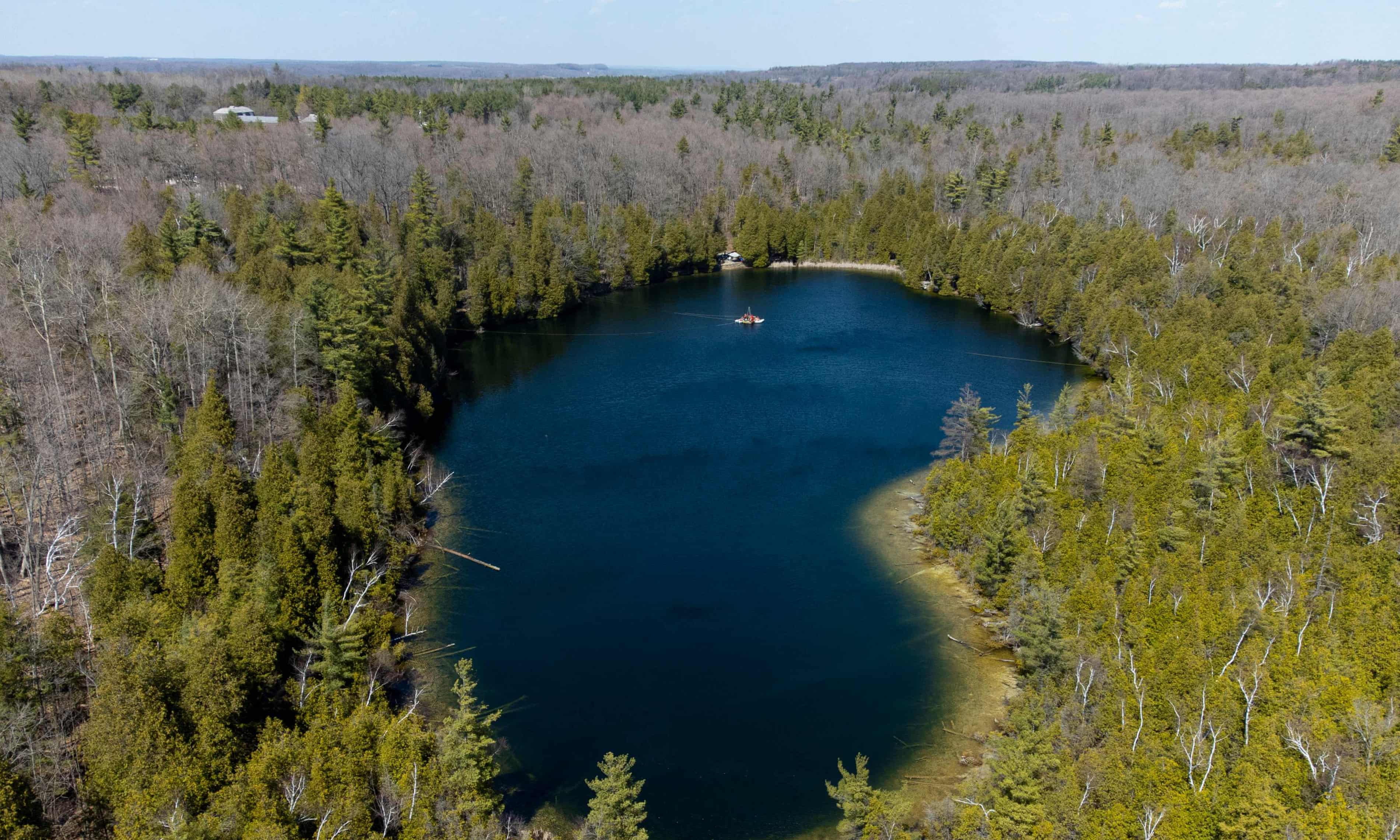
The quest to declare the Anthropocene an official geological epoch has descended into an epic row, after the validity of a leaked vote that apparently killed the proposal was questioned.
The proposal set the start date of the Anthropocene in 1952, marked by the worldwide fallout of plutonium from nuclear weapons’ tests. A new epoch also requires a specific location to represent the change and the sediments collected in a sinkhole lake in Canada were selected in July.
However, a geological committee – the Subcommission on Quaternary Stratigraphy (SQS) – voting in February sank the proposal by 12 votes to four, according to a report by the New York Times. Subsequently, the chair of the SQS said the “alleged” vote was in “violation of the statutory rules” and requested an inquiry into the affair.
Prof Colin Waters, chair of the Anthropocene Working Group that developed the proposal, told the Guardian: “Irrespective of the vote, the AWG stands fully behind its proposal, which demonstrated beyond reasonable doubt that the Earth system now clearly lies outside of the relatively stable interglacial conditions of the Holocene [and] that the changes are irreversible.“
Waters said: “Anthropocene strata are also distinct from Holocene strata. They can be characterised using more than 100 durable sedimentary signals including anthropogenic radionuclides, microplastics, fly ash and pesticide residues, most of which show sharp increases in the mid-20th century.
“The Anthropocene, though currently brief, is of sufficient scale and importance to be represented on the geological timescale,” he said. “We will continue to argue the case and I would not be surprised if there is a future call for a proposal to be reconsidered.”